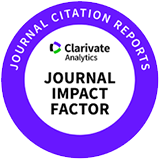A Review of the Valorization of Dairy Industry Wastes through Thermochemical, Biological, and Integrated Processes for Value-Added Products
Received: Sep 29, 2024 ; Revised: Dec 10, 2024 ; Accepted: Jan 13, 2025
Published Online: Jan 17, 2025
Abstract
The dairy industry is a significant player in the food industry, providing essential products such as milk, cheese, butter, yogurt, and milk powder to meet the global population's needs. However, the industry's activities have resulted in significant pollution, with heavy waste generation, disposal, and effluent emissions into the environment. Properly handling dairy waste residues is a major challenge, with up to 60% of the total treatment cost in the processing unit allocated to waste management. Therefore, valorizing dairy waste into useful products presents a significant advantage for the dairy industry. Numerous studies have proposed various approaches to convert dairy waste into useful products, including thermochemical, biological, and integrated conversion pathways. This review presents an overview of these approaches and identifies the best possible method for valorizing dairy waste and by-products. The research presents up-to-date information on the recovery of value-added products from dairy waste, such as biogas, biofertilizers, biopolymers, and biosurfactants, with a focus on integrating technology for environmental sustainability. Furthermore, the obstacles and prospects in dairy waste valorization have been presented. This review is a valuable resource for developing and deploying dairy waste valorization technologies, and it also presents research opportunities in this field.













